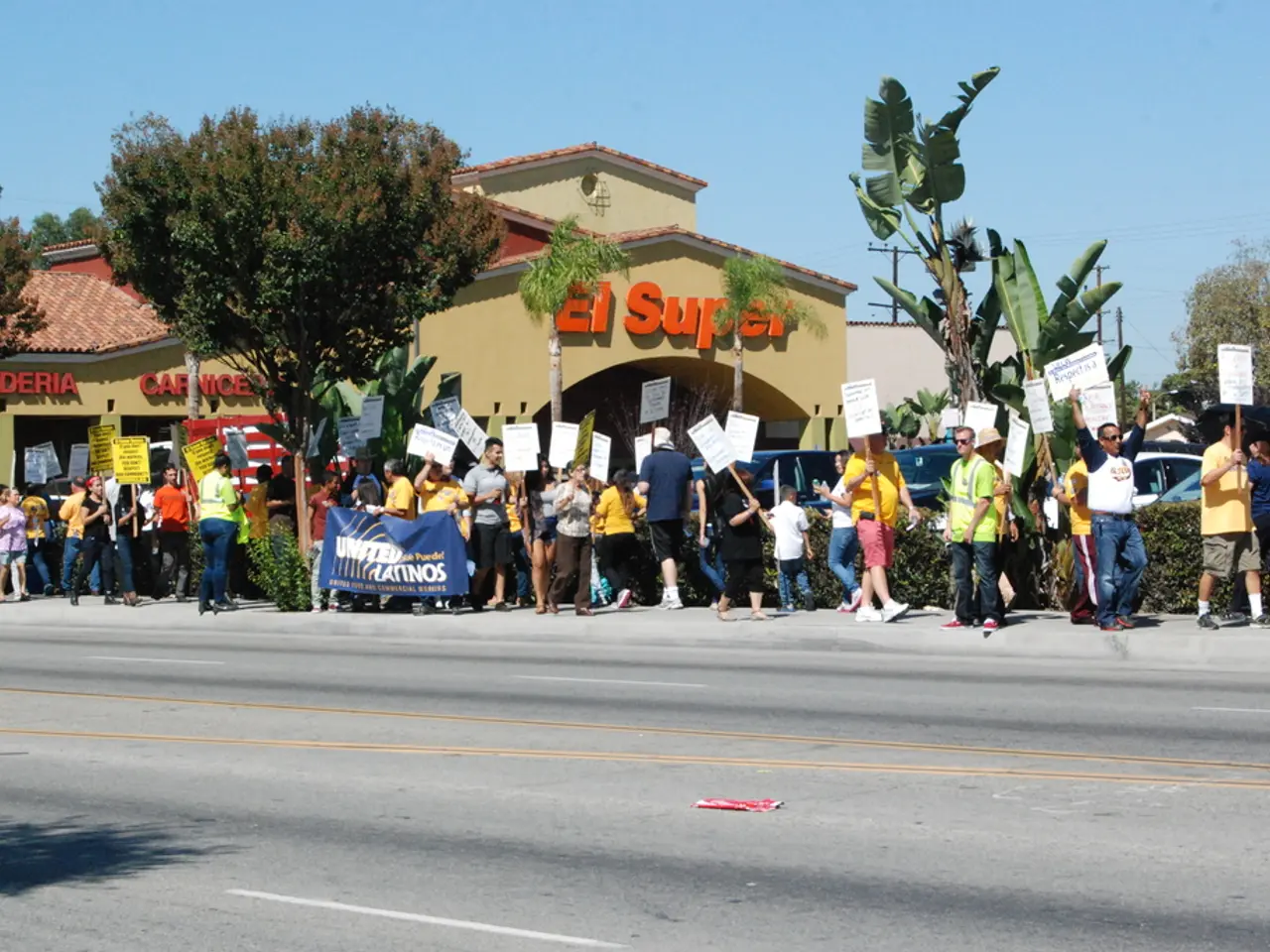Baltimore's Community Efforts Propel Move Toward Lead-Free Drinking Water
In Baltimore, a coalition of researchers from Johns Hopkins University, city officials, and community members are working together to address the public health risk posed by old lead pipes, particularly in vulnerable populations like children.
The Baltimore Service Line Partnership, a key strategy in this initiative, aims to identify lead pipes by asking residents to perform a simple scratch test and report results online. However, initial participation rates were low, with only about 2.4% of residents completing the survey by July 2024, largely comprised of homeowners. This significant gap in reaching renters, who make up 65% of Baltimore households, prompted a shift in approach.
Community engagement has been intensified through door-to-door outreach, helping to overcome barriers such as lack of smartphone access, inability to access pipes, or uncertainty in identifying lead pipes. This approach has resulted in a tenfold increase in survey participation rates.
Educational initiatives are also crucial, involving caregivers and providing information about the dangers of lead exposure, the importance of replacing lead service lines, and how to participate in identification surveys. These efforts help create awareness and motivate action, especially in communities hit hardest by these infrastructural challenges.
The updated U.S. Environmental Protection Agency’s Lead and Copper Rule, which requires cities to identify and replace all lead service lines within 10 years, aligns with these efforts. Baltimore City is actively working towards this target, given that over 200,000 homes need to be surveyed and potentially mitigated.
Natalie Exum, an assistant professor at Johns Hopkins' Department of Environmental Health and Engineering, is leading this community-based participatory research, teaching students about water quality, environmental justice, and systemic health disparities. The program aims to empower students to become change-makers and messengers in their communities.
To boost awareness and participation, a pilot outreach campaign was launched in Pen Lucy, led by District 4 Councilmember Mark Conway, resulting in a significant increase in survey submissions. Students are also acting as ambassadors for the program, helping to spread the message of lead testing to their homes.
This work is a textbook example of community-based participatory research, embedding science within grassroots action and developing solutions with residents. The Johns Hopkins Health Education Training Corps is partnering with Baltimore City schools to further this mission. The effort has continuing support from the Green and Healthy Homes Initiative and includes community partners such as Young, Gifted and Green, MERIT Health Leadership Academy, and the Baltimore Department of Public Works.
In conclusion, Baltimore City's approach combines regulatory compliance with robust community engagement and education programs, leveraging research partnerships and door-to-door outreach to increase participation, improve identification of lead pipes, and ultimately replace hazardous lead service lines to protect public health.
- The public health risk posed by old lead pipes in Baltimore has sparked a collaborative effort among researchers, city officials, and community members.
- The Baltimore Service Line Partnership serves as a key strategy in this initiative, aiming to identify lead pipes through a simple scratch test.
- Initial participation rates in the survey were low, with only 2.4% of residents completing it by July 2024.
- The low participation rate was predominantly among renters, who make up 65% of Baltimore households.
- Intensified community engagement through door-to-door outreach has proven effective in overcoming barriers to survey participation.
- Educational initiatives have been implemented to inform caregivers about the dangers of lead exposure and how to participate in identification surveys.
- The updated U.S. Environmental Protection Agency’s Lead and Copper Rule requires cities to replace all lead service lines within 10 years.
- Baltimore City is actively working towards this target, as over 200,000 homes need to be surveyed and potentially mitigated.
- Natalie Exum, an assistant professor at Johns Hopkins' Department of Environmental Health and Engineering, is leading the community-based participatory research.
- The program aims to empower students to become change-makers and messengers in their communities.
- A pilot outreach campaign was launched in Pen Lucy to boost awareness and participation, resulting in a significant increase in survey submissions.
- Students are acting as ambassadors for the program, helping to spread the message of lead testing to their homes.
- This work embodies community-based participatory research, integrating science with grassroots action to develop solutions with residents.
- The Johns Hopkins Health Education Training Corps is partnering with Baltimore City schools to further this mission.
- The effort has continued support from the Green and Healthy Homes Initiative and includes community partners such as Young, Gifted and Green, MERIT Health Leadership Academy, and the Baltimore Department of Public Works.
- The approach combines regulatory compliance with robust community engagement and education programs.
- The goal is to increase participation, improve lead pipe identification, and ultimately replace hazardous lead service lines to protect public health.




